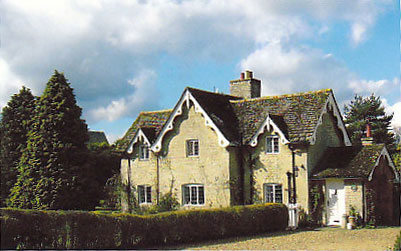 |
Laxton village was listed in the Domesday Book as Lastone. The Parish originally included the present parish of Fineshade where a castle and later, an abbey were built. Laxton lies within the ancient royal hunting ground of Rockingham Forest and in the 15th century was known for “the taking of wolves, cats and other vermin”. In the 16th century, with the demise of the medieval forest system, it passed to the Stafford family of Blatherwycke. |
| When William Stafford’s land was divided between his two daughters in the early 18th century, Laxton went to the younger daughter, Ann, who married George Evans of Bulgaden Castle, Co Limerick, later created first baron Carbery. Their grandson George, third baron, who died at Laxton in 1783, built the house that forms the core of the present Laxton Hall. |  |
 |
On the death of the fourth baron in 1804, Laxton passed to his widow who married her late husband’s cousin, George Freke Evans, who immediately enlarged and remodelled the house and rebuilt the village. Humphry Repton was commissioned to do the work and over the next few years, working with his son, John Adey Repton, he designed and built the school, parsonage and 11 domestic cottages. The result was a model estate village for the early 19th century. An 1810 commentary says that Freke Evans had “erected several new and comfortable cottages for the humble tenants of the village”.
|
 |
| The cottages are of different designs but have some features in common. They were all designed as one storey with attics or semi-attics. Originally they were thatched but between 1900 and 1914 all except one, Woodland Cottage, were modernised and covered with stone slates. Subsequently some have undergone further alterations. |  |
 |
In medieval times there were three inns in the village, the last of these being The Stafford Knot, taking it’s name from the family crest of the Staffords of Blatherwycke. The population of the village was never large and remained constant at about 40 families from 1719 until it declined in the early 19th century. The open fields were enclosed in 1772. |
|
Freke Evans also intended to rebuild the Church, commissioning designs from Humphry Repton and William Carter – all in the Gothic style, but none of these were built. Eventually the church was rebuilt in 1867, retaining the medieval tower. Laxton has changed little in the past 200 years, although a number of new properties were built in the 1980s and the small settlement of Upper Laxton grew up from the 1930s.
|
 |
 |
 |
Spanhoe airfield on the edge of the village was built during World War II and was used by the United States Air Force's 315th Troop Carrier Group for paratroop operations to Arnhem and for the D-Day landings. Today, a large part of the village now falls within a conservation area, so there has been no very recent development, apart from the village hall. The population is very similar to that of the 18th century, at around 40 families. The former estate cottages, the school, the inn and the parsonage and one of the farms are all private and domestic homes and Laxton Hall is a residential home for elderly Polish people, run by the Catholic church. |
